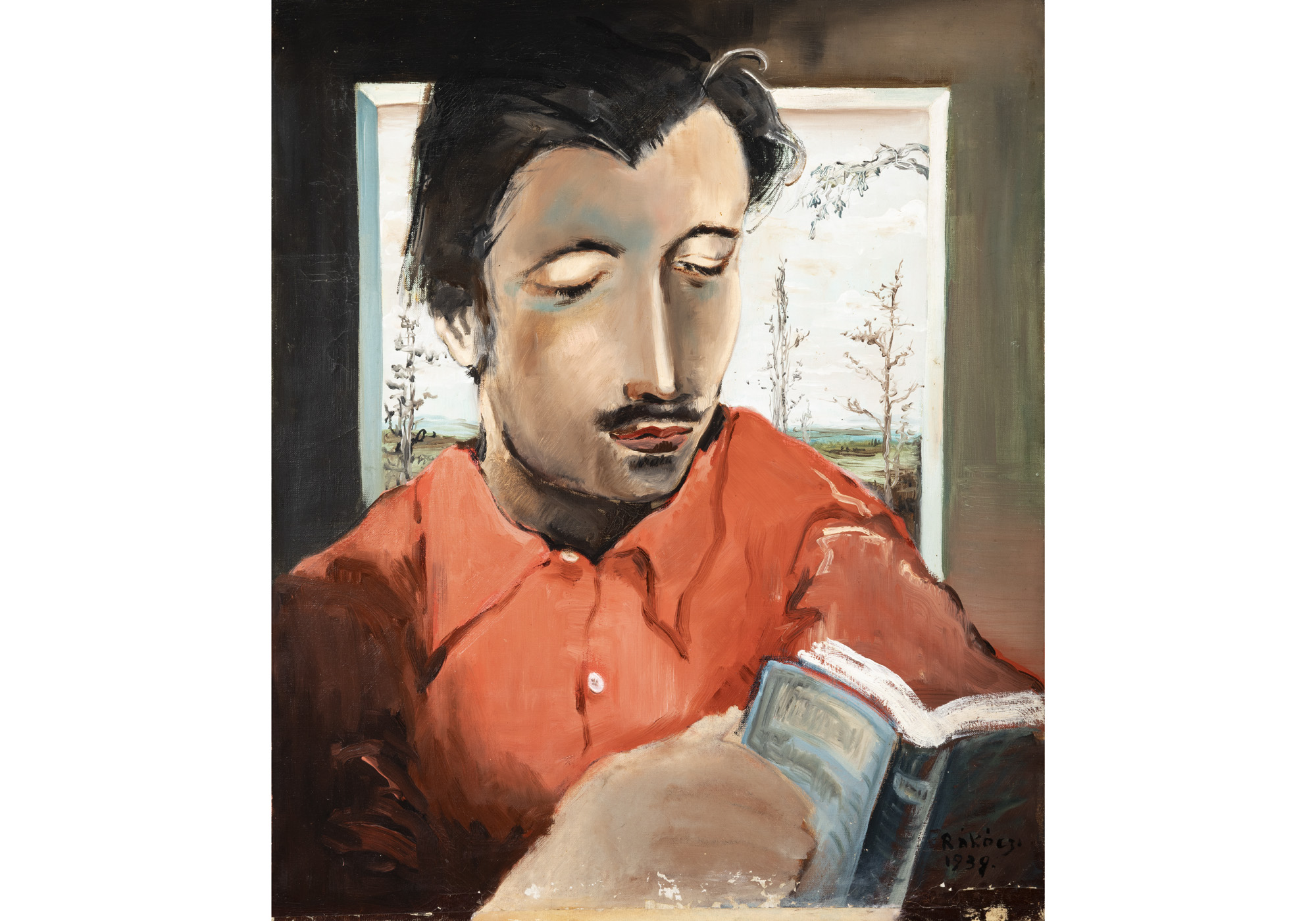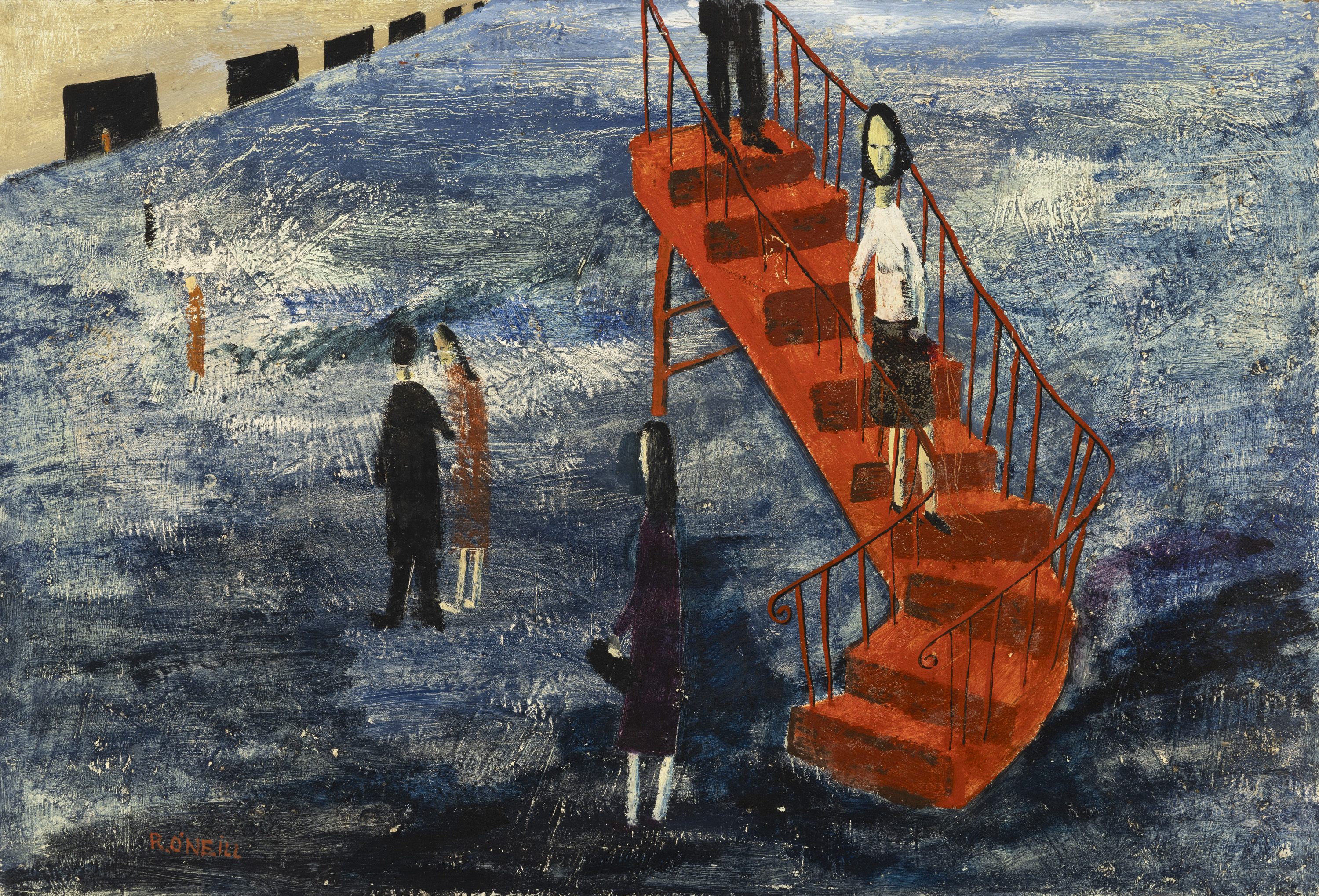Departments
.svg)


Edward Villiers Rippingille began his career as a portrait artist but soon found that his talents were best utilised in the creation of whimsical genre pieces. Rippingville first exhibited at the Royal Academy in 1819 and continued to do so throughout his lifetime, becoming known for capturing community events, such as the one featured here.
Beating the bounds is a tradition that can be traced back to the medieval period. At this time, land was divided into parishes and the clergy and church wardens held the responsibility for its upkeep and management. It was up to the Church to ensure that its parishioners knew the local boundary lines and, before maps became commonplace, this had to be kept as a mental record. Such information was vital as it determined where the town’s livestock could be grazed, what land could be tilled and where the local jurisdiction ended. A yearly practice was thus devised in which the community would come together to walk the parish and take note of the dividing lines.
Usually taking place during Rogation days (the three days directly before Ascension Thursday) or on Ascension Day itself, the inhabitants would gather alongside the clergy and proceed around the boundaries, blessing the land, singing songs and reading homilies. Partaking in the event became a measure of good spirit and those seen as abstaining were thought to be lacking a neighbourly disposition.
However, for certain members, the day would not have rendered fond memories. It was the duty of the older generation to instil the knowledge of the boundaries in the younger and a belief that pain enforced memory often led to some less than agreeable methods being used. Young boys were made to carry thin rods of willow or ash and they were charged with beating the boundary markers in order to help make a mental note of where they lay. However, it was not uncommon for the rods to be turned on the boys themselves, with a quick whipping aiding to remind them of specific spots. Some communities chose to utilise the land itself and became more creative. At streams, boys had their heads rudely dunked under the water, they were pushed into patches of stinging nettles and forced to run wildly along walls so as they would fall prey to the menacing bramble patches on either side. Some records even note that at stone markers, the boys may be lifted, turned upside down and bashed against the rock.
Although the tradition was banned by Oliver Cromwell, beating the bounds made a resurgence during the Victorian era and scenes such as this would have been an expected sight in the weeks following Easter. True to the nature of genre painting, Rippingille expertly captures this important day and pleasantly conveys the varying characters of a local community. Our eyes are assaulted with activity and our minds dart playfully to take in each individual, from the miserly woman who skulks away from the festivities to the boys apprehensively waiting with their rods and the young women eagerly looking on.
Lot 113, in 'The Library Collection' Auction, 26th April.



Through this article, let our expert Adam Pearson guiding you to the (re)discovery of the once established Irish painter Richard O’Neill.












Buying at Auction and the Role of Antiques in a Modern Home




Important Irish Art Auction Highlights

Oliver Dowling Collection by Aidan Dunne




2024 is a year in which Adam’s wants to recognise the key role buying antique furniture and furnishings at auction contributes greatly to the sustainable initiative. In 2019 the Environmental Protection Agency reported stark figures that each year in Ireland 1.2 million reusable bulky items, primarily furniture goes into landfill. Similar to the problem of ‘fast fashion’, the constant production and consumption of new items is leading to rapidly growing waste problem. We want to acknowledge those who are already buying second hand or antique furniture at auction and to encourage new buyers by highlighting the benefits of acquiring affordable, well-made quality items that are built to last.







Irish author, recipe creator and lifestyle influencer, Indy Parsons, selects her favourite pieces from our upcoming Fine Jewellery & Watches auction










.jpg)

Cork-born Irish actress, Sarah Greene, selects her favourite pieces from our upcoming Fine Jewellery & Watches auction




Yvonne Aupicq had met Orpen, we understand, while working as a nurse during the war. He had been admitted to hospital with a suspected case of scabies which ended up being a far more serious case of blood poisoning as he recounts in his wartime memoir ‘An Onlooker in France’. Their relationship continued after 1918 when Orpen was appointed as the official artist to The Paris Peace Conference. They relocated to capital and over the following decade he painted her numerous times, often nude as in Amiens 1914, or The Rape and Nude Girl Reading (1921). Working with her as his model during these early years after the war allowed Orpen an opportunity to re-fuel his creativity.






Editor-in-Chief of IMAGE Publications, Lizzie Gore-Grimes, selects her favourite pieces from our upcoming Fine Jewellery & Watches auction

Our upcoming Fine Jewellery & Watches auction on September 13th features a prime example of Van Cleef & Arpel's renowned 'Mystery Setting'


Our June auction offers a once-in-a-lifetime opportunity to acquire one of the great masterpieces of Irish art and icons of Dublin’s history.



Georgia Chiesa selects some of her favourite lots in the upcoming Vintage Wine & Spirits Auction


Adam’s in conjunction with Suzanne MacDougald are proud to host an online timed auction of artworks to aid the Irish Red Cross’s humanitarian work in delivering vital services to millions of people impacted by the conflict in Ukraine. With no buyers premium 100% of the hammer price will go directly to the Irish Red Cross.

Ros Drinkwater writes of Jack B Yeats' 'The Boat' in the Business Post:


With a consolidated result of €320,000,the At Home sale in Stephan’s Green, was a great success.

